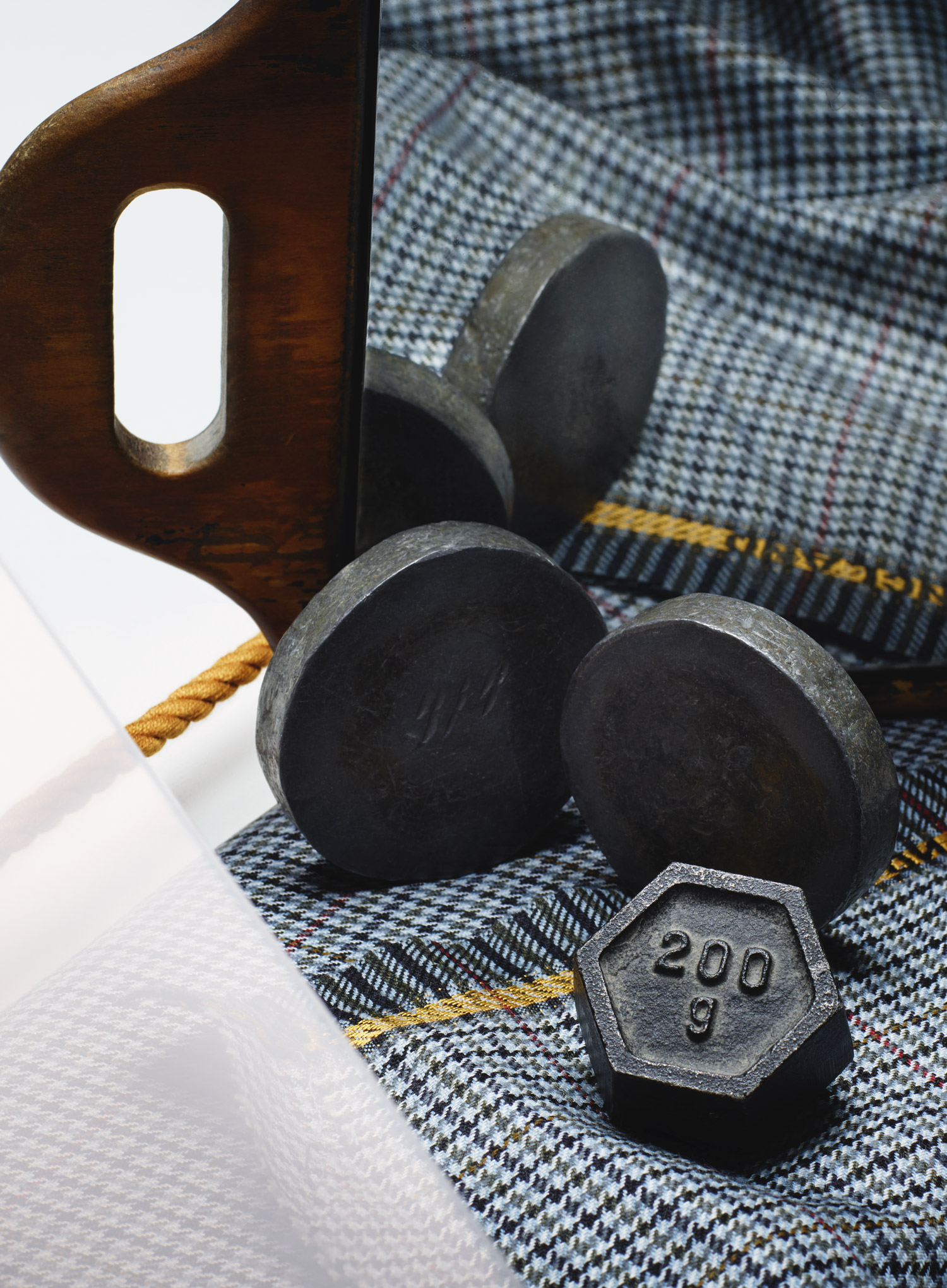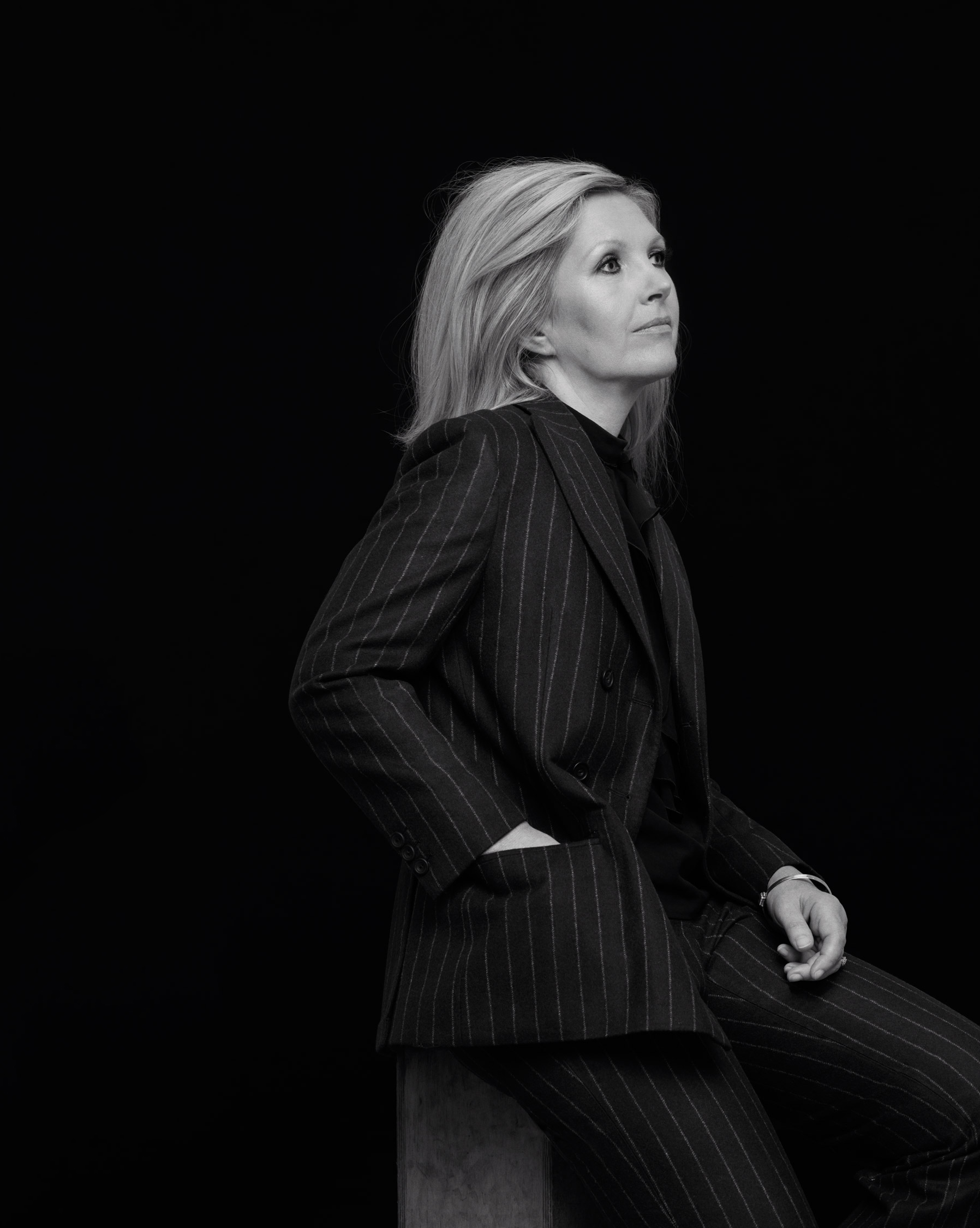Whereas the glories of women’s dress were conceived and refined in the ballrooms and private chambers of Versailles, Hampton Court and the many grand palaces and stately homes of Europe and the British Isles, men’s dress evolved in the fight against the rain, wind and cold of the countryside.
That is why the wool, fustian, corduroy and tweed of the countryside are, even today, the basis of so much masculine dress. When I think of the fabrics of menswear I am moved by the associations carried by the swatches in any tailoring establishing. As I feel them I think of the lashing rain of the Pennines; the biting winds of the Cairngorms; the sudden thick mists rolling across Dartmoor; the deep snow in March that changes the visual geography of the land just as the lambing season gets underway.
I remember the sweet-sour smell of the cart horse’s sweat as it plods its way home; the blue, purple and green flash of the newly poached trout as it is popped into a bag out of sight of ghillies; the pheasant dropped by the gun dog to be hastened out of sight before the game keeper appears; the snares, the ferrets, the cruelty (and the kindness behind it) that make up the life of the country. I recall the smell of the strong pipe tobacco smoked at the end of a day of hard physical graft by the farmers and labourers in the ‘snug’ of the local pub in the days before gastro-pubs and all the pseudo-food they serve today to people from towns who are looking for a link to their past that fast cars and Barbados tans do not bring.
All these things are the hinterland of men’s fashion — by which I mean fashion based on the strengths of fabrics with a clear, authentic link to those of the past, even those no longer fashionable or necessary. All aspects of life respond to advances in knowledge and techniques and menswear is no exception. We need our combat jackets, linen shorts and even our acrylic sweaters but, for me, they are addons (even adjuncts) to the real business of tailoring for men.
It may sound opinionated, but menswear needs a degree of specialisation — even exclusively — that clothes for teenagers and boys do not. And it once had them for all. The Fifty Shilling Tailors; Montague Burton and many other labels enabled ordinary working men — whether from the office desk or the factory floor — to have a suit of some quality made to their measurements. To begin with, it would be made of very good cloth, sometimes rather hairy and frequently very heavy — and always British. I went up to university in the middle of the last century with a pair of cavalry twill trousers of material so thick that it not only defied all wind, rain, sleet and snow, but they could also stand against the wall overnight as their weight broke coat-hangers and caused backs of chairs to sag. And they were virtually indestructible.
But back to the high-street chains of gentleman’s outfitters: by the middle of the nineteenth century, the suit had become an essential garment for town or country wear for ‘professional’ men in the great cities and commercial centres of the world, by which I mean stationmasters to vets; insurance collectors to doctors. It consisted of jacket, trousers and a waistcoat. For a man to come out of his bedroom or dressing room without the last item was a social solecism not even accepted at the family breakfast table — as, in those days, even relatively poor families could afford at least one servant, it would be a social solecism that would have been seen as a blow to the employer’s responsibility to ‘set a good example’ to the ‘lower orders’.
When I see our politicians hoping to curry our voting favours by appearing in public without tie or jacket, I wonder what Gladstone — that stern old stickler for the proprietaries — or Disraeli — the only true political peacock in the history of Parliament — would have to say about power dressing today.
To ‘dress down’ was seen as an act of subversion in the days when most dress was proof of social status. The mantra was simple: it was the privilege of the gentleman to lead, and the obligation of the middle classes was to dress like everybody else who wielded power, in town or country. To do otherwise unsettled society and bought insecurity. In The Forsyte Saga, John Galsworthy’s monumental fictional examination of an Edwardian upper middle class family, we are introduced to a young, bohemian architect called Philip Bosinney, who shocked the entire Forsyte family by wearing a hat described by one of them as “a soft grey hat, not even a new one — a dusty thing with a shapeless crown” — proof that he was a rogue, as he turned out to be.
There were rules about every aspect of dress throughout the 19th and 20th centuries. It was only in the ‘Swinging 60s’ that things relaxed, leaving us with how we dress today — not according to rules (there are few of those left now) — but according to the attitudes of the particular tribe we all belong to, no matter how loosely we interpret them in the universal search for clothing that confers a sense of youth to the wearer. Although tweed suits are bought and worn by all age groups, it is the town suit that figures in most young men’s wardrobes — if a suit figures at all. Clearly, it is not well named as a city suit; the number of men who work in the City is small, but millions of men put on a formal suit every day — usually in a shade of grey or dark blue — as is evidenced by anyone who has travelled on a commuter train. Normally, it is worn with black shoes, white shirt, and — unless you are a politician visiting a deprived or working class area — a tie. It is a uniform and its rules have evolved over the last 200 years from the original template based on military, court, legal and ecclesiastical dress — the dress of authority and power.
But one thing remains constant and that is that even in a world of casual dress (what young man does not have jeans, trainers, sweats, t-shirts and a combat jacket as a basis for his wardrobe, as indeed many older ones do?) the well-tailored suit is seen as an essential. And despite what our politicians and public figures think, it always looks its best with a shirt and tie, even if the waistcoat is temporarily out of favour. And it pays the best dividends if it has been handmade. That does not necessarily mean a trip to Savile Row, although for those who can afford the prices that a hand cut and crafted suit, made to your exact measurements, commands there is nothing that bestows more assurance and feels more ‘right’, in my view.
“The suit is a uniform and its rules have evolved over the last 200 years from the original template based on military, court, legal and ecclesiastical dress — the dress of authority and power”
But the great thing about having clothes made especially for you — and to your wishes — is the involvement. It is no longer just a suit (or jacket or whatever), chosen in 20 minutes from a rack of almost identical styles. It is yours. Your garment. And it is not the same as anyone else’s because you helped to create it. And the creative co-operation between you and the men who cut, sew, press and do all the other things that make an individually tailored garment so empowering is intense and rewarding. The finished garment, some imagine is old fashioned and stiff, not modern, not cool. They are as wrong as someone who says a Bentley isn’t cool. Try driving one, is my answer to that.
Of course, traditions must be preserved, but that does not mean that a handmade suit for today will look the same as one made in the 1930s — or even the 80s. Tastes rarely change, in my opinion, but social or creative moves certainly do although always within a broad template. Does Tom Ford look old fashioned in an Anderson & Sheppard tuxedo? Of course not, because he knows how to talk to men who work with fine cloth and how to come to a mutual agreement on how a suit will finally be. And who is cooler than Tom Ford?
So, what is the problem for guys with money and the desire for bespoke? Why don’t they go for it? Why do they often feel safer and more at ease with a ready-to-wear item from an Italian designer who will charge a lot and make everybody look the same. To me, in these days of individuality in which rich young couples spend a fortune on a modern craftsman-made desk or dining table rather than paying less for its 18th century equivalent, it seems bizarre that they don’t want that uniqueness in the most personal thing of all, which is the clothes on their back.
How can this be loosened up? After all, if designers have their way everything in male dress is now up for grabs. The next five years will see a revolution. Menswear will have real fashion status, as it did in the past. And men will want to make themselves look more individual. But how?
This is my suggestion. For me, the most wondrous thing about men’s tailoring is the fabric and its huge variety. To young guys, I say get into training now. Be fit and ready for the coming revolution. Go to a tailor. He won’t bite or try to take advantage of you. He is a member of a very select group of craftsmen for whom their integrity is the most valuable thing in their lives. Start with getting to know the cloth. You’ll be amazed at the variety. Run it through your hands. Feel the softness. Then feel the toughness. Notice the subtlety of the fabric — the amazing number of colours in a tweed; the sheen of a fine wosted. Then talk cut and style, weight, lining, buttons — all the things that will build your garment to reflect you and your individuality.
Then, having taken the trouble to get to know something about tailoring, you can begin to question the rules. Why should a light grey flannel not be considered suitable for city wear when electric blue is? Why is it not considered right to wear a very fine tweed suit in the boardroom? We know the answers. Tradition. And we want to keep that — but not mindlessly. We can adapt and improve men’s tailoring, secure in the knowledge that the man — or, I am pleased to say, increasingly the woman — who cuts our cloth the way we want to wear it will help us learn whilst making sure we do not throw out the baby with the bathwater. Go for it! You have nothing to lose but your inhibitions.



